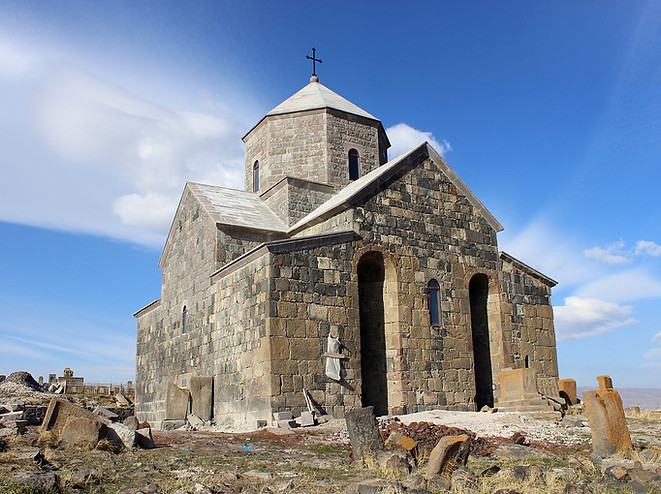
Mt. Armaghan is an extinct volcanic cone in the Geghama mountain range and is 2829m (9,282ft) above sea level. The mountain is an easy hike with an incredible view of Lake Sevan, with a beautiful mountain lake at the top. There are also remains from an ancient church at its peak. As legend has it, when the mountain top is covered with fog, fairies decent to drink from the lake while remaining hidden.
Mt. Armaghan

Star Map is an ancient astronomical complex with petroglyphs from the 5th mill. BC, predating Stonehenge. On the western side, there are huge sculptures of people, pigeons and fish. In the observatory area, there are illustrations of either a sun clock, Zodiacal constellations, or as some believe a map depicting a meteorite fall, leading to the base of a nearby volcanic cone with huge craters only a large meteorite could generate.
Star Map

This ancient monastery differs from others because it was built in a canyon in order to be hidden. One can only see it when up close. The main church of Saint Grigor was built in 903 by Prince Shapuh Bagratuni and his sister Mariam. They were siblings of King Smbat I of Armenia, who was later buried in Vanevan Monastery in 914.
Vanevan Monastery

These monastery ruins sit atop a hill and include St. Astvatsatsin Church (originally built in the 9th century by Prince Grigor Supan) and a large medieval cemetery with numerous khachkars (cross stones). In early medieval years this was the capital of the region known as Kot, and both Kotavank and Kot were partially destroyed during invasions in the 10th and 11th centuries and later by an earthquake.
Kotavank Monastery

The large, ruinous Shoghagavank monastic complex is situated on a hill and was built between 877 and 886 as a dedication to St. Peter. It was founded in the honor of King Smbat I’s first daughter’s husband and is the gravesite of Princess Mariam. The area has an array of preserved khachkars (cross stones), and is where local royalty are thought to be buried.
Shoghagavank Ruins

The Natural Bridge of Tsakkar was formed as a result of water erosion and is composed of two arches. The larger arch that stands above the Bakhtak River is 10m high and 5-6m wide, while the smaller arch is 2m high and 5m wide. The ruins of an old water mill can be seen under the smaller arch in the old riverbed.
Tsakkar Bridge

During the explosions held while constructing the Arpa-Sevan water tunnel, an ancient Urartian cuneiform inscription was unexpectedly discovered at the opening of the tunnel, dated to the 1st mill. BC. Urartu was among the earliest Armenian kingdoms and this cuneiform inscription was inscribed by King Argishti I, describing a city he had built.
Urartu Inscription




